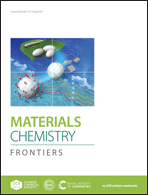A mineralization strategy based on T-cell membrane coated CaCO3 nanoparticles against breast cancer and metastasis†
Abstract
Chemotherapy has always been ineffective against cancer metastasis due to the limited diffusion ability of passive agents into the internal tumor. Herein, we designed a mineralization strategy based on multifunctional calcium carbonate nanoparticles (CaFAM) for treating breast cancer and inhibiting metastasis. CaFAM consisted of CaCO3 nanoparticles loaded with folic acid molecules (FA) and coated with the T-cell membrane. In the acidic tumor microenvironment, CaCO3 disintegrates to release calcium ions (Ca2+) and FA. The released FA molecules conjugate to cancer cells by folate receptors, and then mediate Ca2+ to mineralize, which results in the suppression of migration, invasion and proliferation of cancer cells. Particularly, the T-cell membrane gives materials the ability to target tumors and avoids the immune clearance of the body. The tumor treatment results demonstrate that CaFAM provides a potential method for tumor treatment.



 Please wait while we load your content...
Please wait while we load your content...